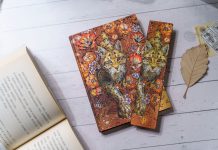
Robert R. Livingston. Via: Suzanne DeChillo/The New York Times
Late in 2013, a letter tied to the fight for American independence was found in a Manhattan museum’s attic. Addressed to “the people of Britain,” the twelve-page letter handwritten by Robert R. Livingston goes into great detail about the infringement of colonists’ rights, the restrictions on trade and the “rigorous acts of oppression which are daily exercised in the Town of Boston.” Until its discovery, only the final July 1775 printed version had been known to exist, so this lengthy example of the early works of one of the drafters of the Declaration of Independence is a hugely important part of American history.
With this letter expected to fetch upwards of $400,000 at auction, its discovery got us thinking: What other uncovered “lost” manuscripts influenced the way we view the world?
1) Kangaroo in 400-Year-Old Portuguese Manuscript

The discovery of a 16th-century Portuguese manuscript cast doubt on everything we thought we knew about the discovery of Australia. The drawing of what appears to be a kangaroo (a marsupial found only in Australia) suggests that Portuguese explorers may have discovered the continent before the first recorded European landing by Dutch navigator Willem Janszoon in 1606. However, with the exact date of creation unknown (it could have originated anytime between 1580 and 1620), nobody is quite ready to re-write the history books just yet.
2) Medieval Unicorn Cookbook

Having a collection as extensive as it does, it’s not surprising that a book or two has gone missing at the British Library. In April 2012 a long-lost medieval cookbook was re-discovered by the members of the British Medieval Cookbook Project. Among the recipes attributed to chef Geoffrey Fule for cooked hedgehog and blackbird attributed are a few with a more exotic ingredient – the unicorn. Whether these recipes were meant in jest or for the actual possibility of hunting unicorn for food, they definitely have us thankful that we’re not eating in the Middle Ages.
3) 18th Century Jewish Haggadah Manuscript

An 18th-century manuscript was found last year in a garage during a house clearance. The handwritten document, painted on goat skin, is a rare Haggadah (a Jewish text used on the first days of Passover) thought to date back to 1726. The historical importance of this particular Haggadah cannot be understated as it is one of the rare illustrations that, according to Rabbi Yehude Brodie, focuses on “not necessarily depicting what a Jew in Egypt would have looked like, but what a local Jew would have looked like.”
4) Marcuse’s “One-Dimensional Man” Draft

The recent discovery of a first draft of Herbert Marcuse’s “One-Dimensional Man” offers a firsthand glimpse into the political professor’s Marxist evolution. Sure to spark heated debate among political scientists and philosophers alike, the draft is a dark critique of American society during the Cold War and the growing conflict in Vietnam. With many years having passed since the paper’s original 1964 publication, the “new” version of the classic text has inspired renewed interest into the ideas of the late American thinker.
5) The Dead Sea Scrolls

Probably the most famous uncovered manuscript of all time, the Dead Sea Scrolls are a collection of 972 texts written in Hebrew, Aramaic, Greek and Nabataean on parchment, papyrus and bronze. Uncovered about a mile inland from the Dead Sea between 1946 and 1956, the scrolls are of great historical, religious and linguistic significance as they include the earliest known surviving manuscripts of what has become the Hebrew Bible canon. Also among the discovered texts are extra-biblical manuscripts that preserve evidence of the diversity of religious thought in late Second Temple Judaism.
With original manuscripts (and cookbooks!) continuing to be re-discovered, our historical narrative is constantly evolving. What discoveries (political, artistic or otherwise) have rocked the way you view the world?




